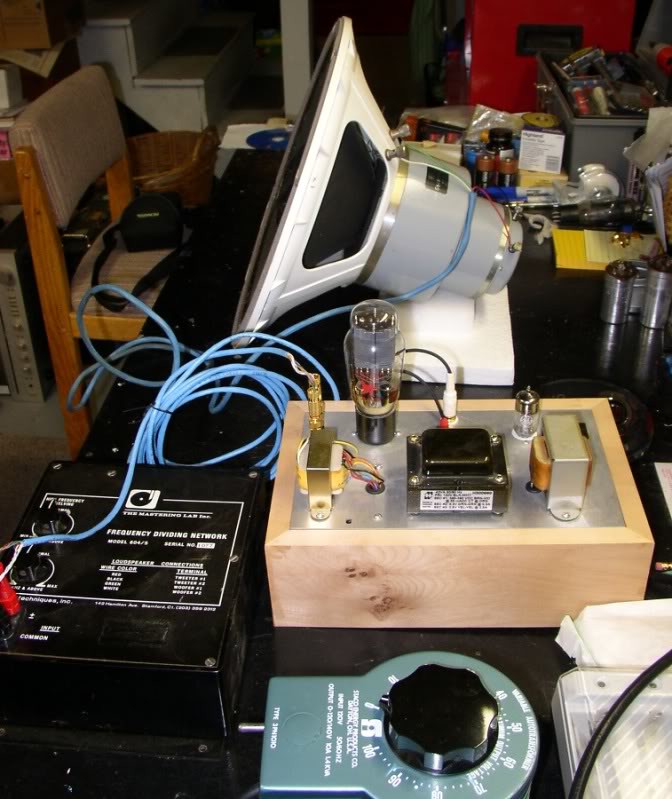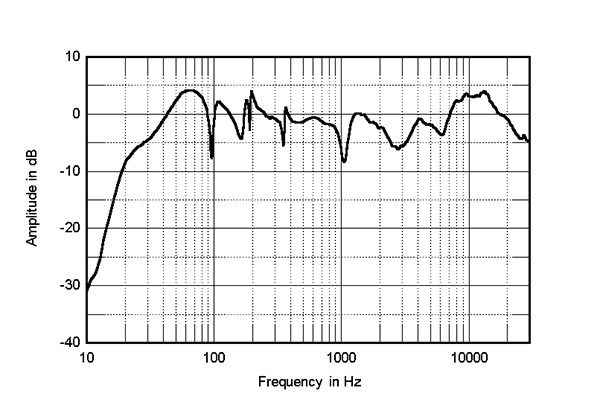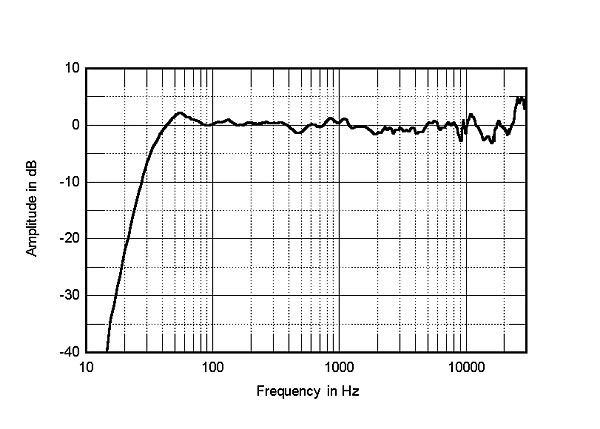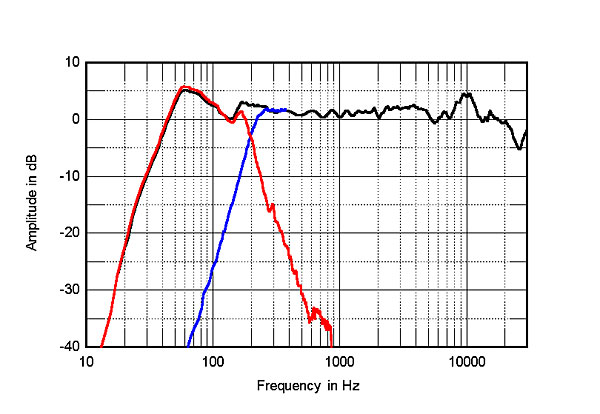As always, I am copying/pasting from my website directly here. Therefore, some tables, pictures, paragraphs may look odd here. If you want to read the review from my site here is the link:
https://www.erinsaudiocorner.com/loudspeakers/klipsch_heresy_iv/
Link to YouTube review:
Klipsch Heresy IV Speaker Review
View attachment 95822
Intro
The
Klipsch Heresy IV is a 3-way speaker with a classic look. The Heresy IV features a 12-inch midwoofer, K-702 midrange compression driver, and K-704 Tractrix horn for high frequencies. On the back of the speaker is Klipsch’s new element to this speaker lineup: the Klipsch Tractrix port. This speaker can be bi-amped if desired thanks to the links on the two sets of terminals above the rear port. The Heresy IV comes in a variety of finishes and features a tweed grille to hide the drive units. The particular model I tested is the Cherry finish. Current retail for a pair is $3,000 USD.
I won’t get in to all the details of the speaker’s makeup as that can be found on the specification page
here, or in the provided screenshot below. I would rather spend my time in this review discussing the performance.
View attachment 95824
BUT! I will provide some of my own photos…
View attachment 95825
View attachment 95827
View attachment 95828
View attachment 95829
Tweeter close-up:
View attachment 95830
Midrange close-up:
View attachment 95831
Speaker terminals:
View attachment 95832
Grille with the Klpsch Heresy logo:
View attachment 95826
Aesthetics are always a very personal thing. Some may not like the look of this speaker, but I do. I also fancy a lot of other designs that are more flashy. This speaker is the opposite of flashy, though, yet I still appreciate its retro aesthetic.
Objective Data
Unless otherwise noted, all the data below was captured using
Klippel Distortion Analyzer 2 and Klippel modules (TRF, DIS, LPM, ISC to name a few). Most of the data was exported to a text file and then graphed using my own MATLAB scripts in order to present the data in a specific way I prefer. However, some is given using Klippel’s graphing.
Foreword: Subjective Analysis vs Objective Data (click for more)
Impedance Phase and Magnitude:
Impedance measurements are provided both at 0.10 volts RMS and 2.83 volts RMS. The low-level voltage version is standard because it ensures the speaker/driver is in linear operating range. The higher voltage is to see what happens when the output voltage is increased to the 2.83vRMS speaker sensitivity test.
View attachment 95833
View attachment 95834
Frequency Response:
Notes about measurements (click for info)
The measurement below provides the frequency response at the reference measurement axis - also known as the 0-degree axis or “on axis” plane - in this measurement condition was situated at the tweeter. I did reach out to Klipsch directly - both via email and twitter - to ask what the designed reference axis was but received no reply. Per my research it seems everyone listens to these speakers on the tweeter axis (typical) so I proceeded with my measurements in that fashion.
The speaker was measured
without the grille in place. I did not have the time to measure with the grille in place.
View attachment 95835
Below are both the horizontal and vertical response over a limited window (90° horizontal, ±40° vertical). I have provided a “normalized” set of data as well. The normalization simply means that I took the difference of the on-axis response and compared the other axes’ measurements to the on-axis response which gives the viewer a good idea of the speaker performance, relative to the on-axis response, as you move off-axis.
View attachment 95837
View attachment 95838
View attachment 95839
As I said above, the provided frequency response graphs were given with a limited set of data. I measured the response of the speaker’s vertical and horizontal axis in 10-degree steps over 360-degrees. Nearly 70 measurements in total are represented in my data. As you can imagine, providing all those data points in a single FR-type graphic below is a bit overwhelming and confusing for the viewer. A spectrogram is an alternate way to view this full set of data. This takes a 360-degree set of data and “collapses” it down to a rectangular representation of the various angles’ SPL. I have provided two sets of data: one set for horizontal and one for vertical. Each set consists of 2 graphics:
- Full response (20Hz - 20kHz with the angles from 0° to ±180°) with absolute SPL values
- Full, “normalized” response (20Hz - 20kHz with the angles from 0° to ±180°) with SPL values relative to the 0-degree axis
Normalized plots make it easier to compare how the speaker’s off-axis response behaves relative to the on-axis response curve.
View attachment 95841
View attachment 95842
View attachment 95843
View attachment 95844
The above spectrograms are the standard way of providing directivity graphics by most reviewers. Some prefer
not to normalize the data. Some prefer to normalize the data. Either way, it’s a useful visual to get an idea of the directivity characteristics of a speaker or driver.
However, these “collapsed” representations of the sound field are not very intuitively viewed. At least not to me. So, I came up with a different way to view the speaker’s horizontal and vertical sound field by providing it across a 360° range in a globe plot below. I have provided both an absolute SPL version as well as a normalized version of both the horizontal and vertical sound fields.
Note the legend provided in the top left of each image which helps you understand speaker orientation provided in my global plots below.
View attachment 95845
View attachment 95846
View attachment 95847
View attachment 95848
Welp, I was interested in them for the aesthetic if nothing more, but there goes that idea.
CEA-2034 (aka: Spinorama):
The following set of data is populated via 360-degree, 10° stepped, “spins” from vertical and horizontal planes resulting in 70 unique measurements. Thus, this is sometimes referred to as “Spinorama” data. Audioholics has a great writeup on what these data mean (
link here) and there is no sense in me trying to re-invent the wheel so I will reference you to them for further discussion. However, I will explain these curves lightly and provide my own spin on what they mean (pun totally intended). Sausalito Audio also has a good write-up on these curves
here. Furthermore, you can find discussion in Dr. Floyd Toole’s book “Sound Reproduction”. H
ere is a great video of Dr. Toole discussing the use of measurements to quantify in-room performance.
In short, the CEA-2034 graphic below takes all the response measurements (horizontal and vertical) and applies weighting and averaging to sub-sets and can help provide an (accurate) prediction of the response in a typical room. If there is a single set of data to use in your purchase decision, this is probably it.
Alternatively, click this arrow, if you want my quick take on what these curves mean without going to another site.
View attachment 95849
Below is a breakout of the typical room’s Early Reflections contributors (floor bounce, ceiling, rear wall, front wall and side wall reflections). From this you can determine how much absorption you need and where to place it to help remedy strong dips from the reflection(s). In this case, the listening room would benefit from having at least a carpeted floor and, if willing to do so, acoustic absorption on the ceiling between the listener and the speakers.
View attachment 95850
And below is the Predicted In-Room response compared to a general target curve equaling -1dB/octave.
View attachment 95851
You may ask just how useful the above prediction is. Well, I’d be remiss for not delving in to that a little bit here. Please see my Analysis section below for discussion on this.
Harmonic Distortion:
Measurements were conducted at 2 meters ground plane using Klippel’s TRF module. Multiple output levels were tested to provide the trend of distortion component profiles and to provide a comparison against other drive units I have tested. The SPL provided is relative to 1 meter distance, averaged in the noted bandpass region.
View attachment 95852
Maximum Long Term SPL:
The below data provides the metrics for how Maximum Long Term SPL is determined. This measurement follows the IEC 60268-21 Long Term SPL protocol, per Klippel’s template, as such:
- Rated maximum sound pressure according IEC 60268-21 §18.4
- Using broadband multi-tone stimulus according §8.4
- Stimulus time = 60 s Excitation time + Preloops according §18.4.1
Each voltage test is 1 minute long (hence, the “Long Term” nomenclature).
The thresholds to determine the maximum SPL are:
- -20dB Distortion relative to the fundamental
- -3dB compression relative to the reference (1V) measurement
When the speaker has reached either or both of the above thresholds, the test is terminated and the SPL of the last test is the maximum SPL. In the below results I provide the summarized table as well as the data showing how/why this SPL was deemed to be the maximum.
This measurement is conducted once with a 20Hz to 20kHz multitone stimulus.
You can watch a demonstration of this testing via my YouTube channel:
Test 1: 20Hz to 20kHz
Multitone compression testing. The red line shows the final measurement where either distortion and/or compression failed. The voltage just before this is used to help determine the maximum SPL.
View attachment 95853
Multitone distortion testing. The dashed blue line represents the -20dB (10% distortion) threshold for failure. The dashed red line is for reference and shows the 1% distortion mark (but has no bearing on pass/fail). The green line shows the final measurement where either distortion and/or compression failed. The voltage just before this is used to help determine the maximum SPL.
View attachment 95854
The above data can be summed up by:
- Max SPL for 20Hz to 20kHz is approximately 110dB @ 1 meter. The compression threshold was exceeded above this SPL.










